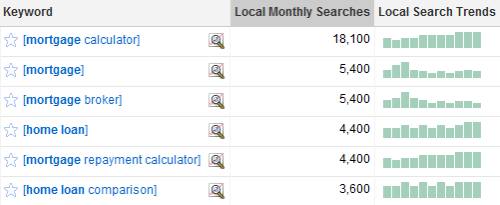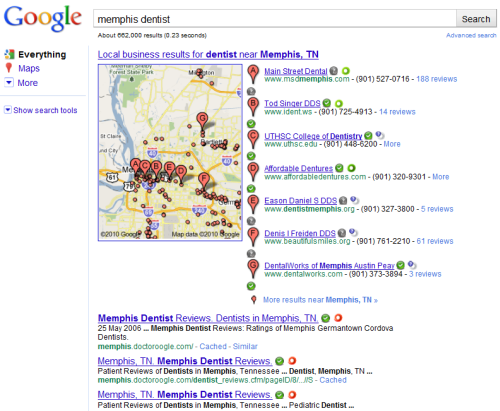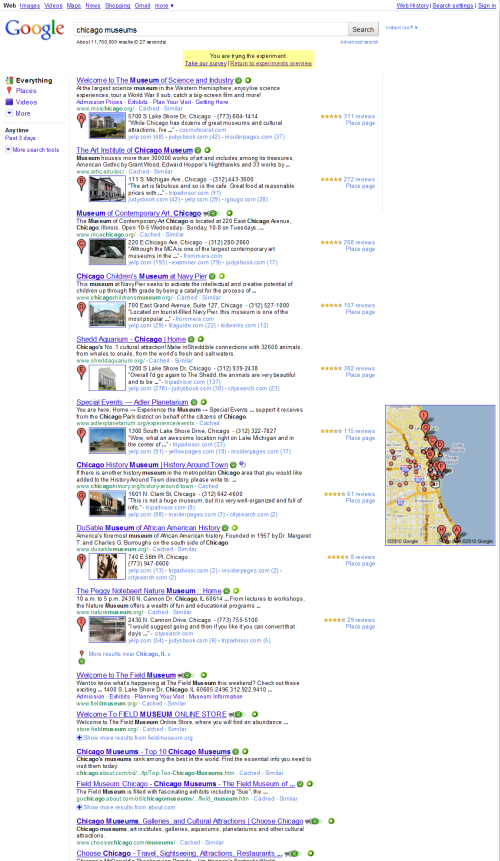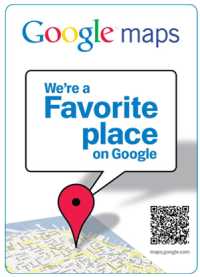Reading Time: 2 minutesFollowing on from my previous post How to SEO for Google PlaceRank, I was delighted to read Bill Slawski’s discovery of a new patent: Machine-Readable Representation of Geographic Information, which was published two days ago. It isn’t easy to read, but head over to Bill’s post to get a human friendly rendering.
(Aside: I can’t view the USPTO images in spite of reinstalling QuickTime via Firefox 3.0, IE8, IE6 or Chrome on two machines. I only get the Q logo briefly, then a blank image. What am I doing wrong?)
We know how popular QR codes are in Japan. Will they work in the West? Bill asks the question:
One question that needs to be asked, is why would Google rely upon stickers for a system like this instead of using something like Global Positioning Satellite (GPS) information, or cell phone triangulation, or some other method that would negate the need for someone to take an actual picture?
The “picture” as I understand it is not of the venue, à la Google Goggles. I use a Telstra QR code app on my S60 work phone and my personal iPhone and aim it at the QR code. As soon as the app sees the QR code in focus, it proceeds to open the web browser and takes me to that URL. I can choose to bookmark it at that time or just view it and then close the browser. Thus there is no picture taken.
A few months ago, B&T reported that Telstra signed a deal with Pacific Magazines to use QR codes across the publisher’s range of magazines, including Marie Claire, New Idea, Famous, and Who Weekly. Over four months, the trial resulted in 20,000 scans by readers.
Over a year ago, my employers conducted a small trial in a Melbourne suburb using similar stickers on shop windows. The results were not encouraging, including the problem with one venue having plate glass that made it difficult to scan the QR code. However, time has marched on and as millions of iPhones and other smart phones are in use, there might be a future for these codes in the West (or Down Under).
Stickers do more than facilitate data transfer or help nominate Favorite Places – they extend Google branding (as if Google needs more branding) to thousands of passersby.
What type of business would do well using QR codes? Here is my pick:
- Restaurant bill holders are a better place for these codes than windows, for I can picture myself scanning the code when I get the bill after a great meal. The I don’t think I’d go out into the dark street to scan a sticker in the window.
- Public transport timetables for a specific train line or bus/tram route.
- Coupons, offers, whatever, provided that the URL is relevant when using a phone browser.
Phone browser? Yes, if I see a QR code URL in a magazine, I won’t bother to scan it with my phone if it is not a mobile site. This is one of the barriers to adoption.
A desktop mouse that acts as a scanner is more likely to get me to scan QR codes for use with a desktop PC. Nine years ago the CueCat scanner was ahead of its time. It was a scanner but not a mouse and was a commercial failure, as per the Wikipedia article.
Perhaps, if a phone app can easily transfer the URL to my desktop via a sync process, I might scan QR codes more often.
 It seems that the Twitter account had been silent since 20 June and wasn’t particularly active before then. Continue reading
It seems that the Twitter account had been silent since 20 June and wasn’t particularly active before then. Continue reading 








